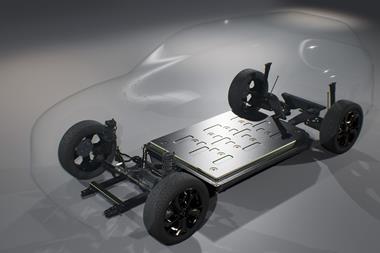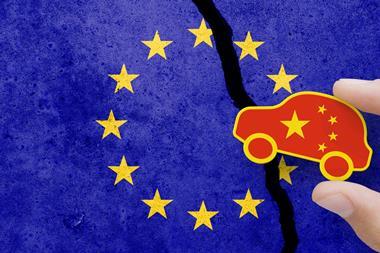Volvo’s new C70 convertible is a stronger car thanks to the application of four new welding techniques. Niclas Palmquist, Manufacturing Engineering, Volvo Cars, describes how the Swedish company has surpassed its standard
When Volvo Cars set out to develop the new C70 convertible the performance requirements of the vehicle, in terms of weight, stiffness and structural strength, were substantially increased compared to the existing model. This was achieved thanks to the introduction of several new applications, notably laser welding and laser brazing, enabling product improvements that otherwise would have been very difficult to obtain. Rather than using the 850 platform, which was used for the old model, the new C70 was developed around the C1/P1 platform, in common usage with Ford Focus and Mazda3. One of the challenges was to utilise a three-piece foldable hard roof (a world first), since the new C70 was supposed to replace the old coupé and convertible.
Product development, design and production were handled via a joint venture between Volvo Cars and the famous Italian-based Pininfarina. As with the old model, Uddevalla in Sweden was chosen as production location for the new C70.
The combination of as much as 85 per cent high strength steel, and 10.7m laser welding and 0.2m laser brazing, together with design improvements, made a remarkable impact on the key features of the C70. Together they have increased torsional stiffness by 250 per cent compared to the old C70 while lowering the Lightweight Body Construction Index by a factor of 2.7.
No less than four different laser welding applications and one laser brazing application (the first in-line application) were selected for the new C70, all with a different approach and utilisation of the laser technology.
Laser welding of the lower and upper flange of the sill made a basic design improvement possible for the sill structure. Both the upper and lower flanges could be dramatically reduced when laser welded, increasing the sill beam cross-section. This laid the base for a dramatic improvement of the torsional stiffness of the body.
Laser welding, with its single-side access capability, was also used for connecting the rear fender to sill outer, as well as laser brazing of the A-pillar cover to the windscreen cross member, also making benefit of the laser´s single side access feature.

The production volume intended for the new C70 was in the outset a low volume production, scheduled for 17,000 cars per year. However, still an increase in capacity from 7,800 units of the previous model. Thus the long cycle time, slightly over four minutes, has made possible the multi-laser-process approach needed for the car body joining tasks.
Permanova Lasersystem AB was (again) selected as the turnkey supplier for the laser station. The laser station is equipped with a 4 kW Trumpf lamp-pumped Nd:YAG laser with four fibre outputs and five fibres, four in use and one spare for quick exchange. The fibres are connected to four different tools mounted on three ABB robots (model ABB 6600-2.8).
One robot on each side welds the upper and lower sill joints (inner to outer sill). These two robots each carry a Permanova Welding Tool with double pressure wheels, capable of clamping forces up to 1,600N. They also feature seam tracking to overlap edge welds by means of following the upper material in the joint, and position the laser beam at the edge of that material.
The same tools also weld the overlap edge weld for the rear fender to sill by simply folding away the lower wheel and making a ‘normal’ single wheel overlap edge weld.
In order to ensure the quality of these two types of welds – sill flanges and rear fender (which feature a big thickness difference in the upper sheet) – the head was equipped with a motorised focusing unit, allowing adjustment of the focus position of the weld in the range of -10 to +20mm in between welds.


The third robot carries two tools, one Permanova Welding Tool with two independently switchable pressure fingers in order to gain maximum access in each welding direction, and one Scansonic ALO1 laser-brazing tool.
The Permanova Welding Tool welds the A-pillar cover plate to the hydroformed A-pillar with an overlap weld with single sided access. Meanwhile, the Scansonic laser brazes the A-pillar cover to the windscreen crossmember, using a CuSi3 filler wire. The laser-brazed joint is not followed by any grinding or polishing steps, but fully visible “as is” after the laser brazing.
Of the 249 seconds cycle time (250 seconds allowed) the laser has an impressive 82 per cent “beam-on-time” (or 204 seconds). This is only possible by optimising the process in a way that the laser light is switched from one tool to the other when a seam is finished – another robot is ready with its tool in start position. In this way, any time spent for robot movements within the work cycle can be minimised.


































